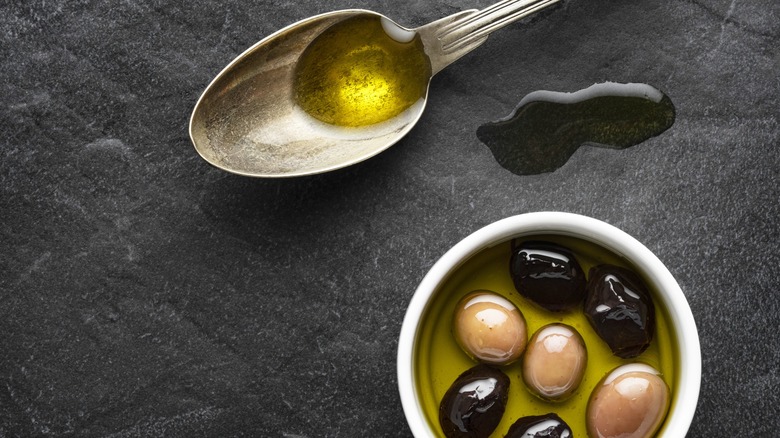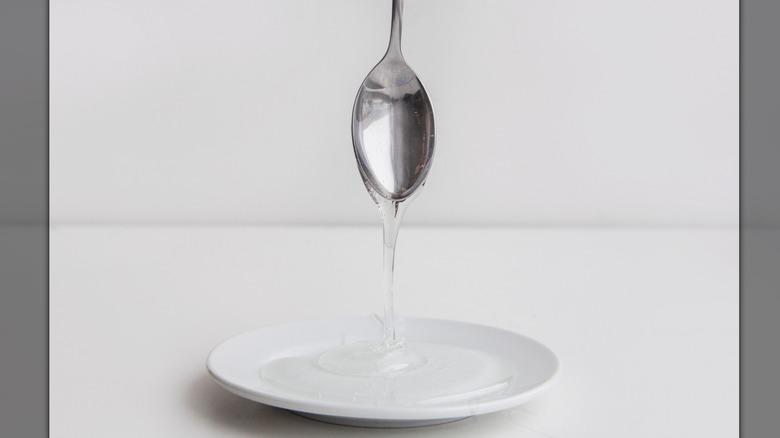Use A Spoon To Prevent Liquid Splatter When Cooking
Cooking splatters make for a messy kitchen and sloppy-looking clothes. At worst, they can even scald the skin when preparing super-hot soups and stews. To save your kitchen tiles from those unsightly splashes, use the back of a spoon to add liquids to pans and bowls to prevent unwanted splatters.
It's the back of the spoon that you're interested in here, over its concave bowl area, because of its nifty convex shape. Simply hold the spoon close to the surface of the ingredients in your pan and gently pour your liquid over the back of it. The shape of the spoon will help disperse the liquid thinly across the large surface area to drip neatly off of the tip, reforming a clean stream. This action also reduces the force of the flow, so the liquid — whether it be water, wine, broth, or cream — dives well into the liquid without any unnecessary splatter. To further cut down on the spatter, close the distance between the tip of the spoon and the mixture you're pouring into.
Spoon pouring is safe and skillful pouring
Preventing splatters from liquids is particularly important if, for example, you're pouring a splash of red wine into a bubbling meaty pot roast or simmering soup because effused hot splashes can scald and burn the skin. According to the Burn and Reconstructive Centers of America, one of the most common causes of burns for people young and old across the country is hot water, so taking care to slow down in the kitchen and using a spoon to combine liquids more safely is worth getting used to.
Did you know that bartenders also use this back-of-the-spoon trick to suspend liquids on top of each other when making fancy, layered cocktails? Indeed, it's so effective that many bars invest in special pouring spoons with a notch on the handle that they can rest on the edge of a glass. This frees up their hands so they can easily pour fruity liquids into pretty cocktail glasses.
However, at home, a simple upturned tablespoon or dessert spoon works perfectly well to help safely pour soy sauce into a hot pho or add a thickening cornflour slurry to chicken corn soup. You can even use this technique to pour milk into the dry mix for pancakes, douse a fruit cake with spirits, like brandy or rum, or feed a loaf cake with a tart lemon syrup. And once you master it, you can toss out all your funnels, too!

